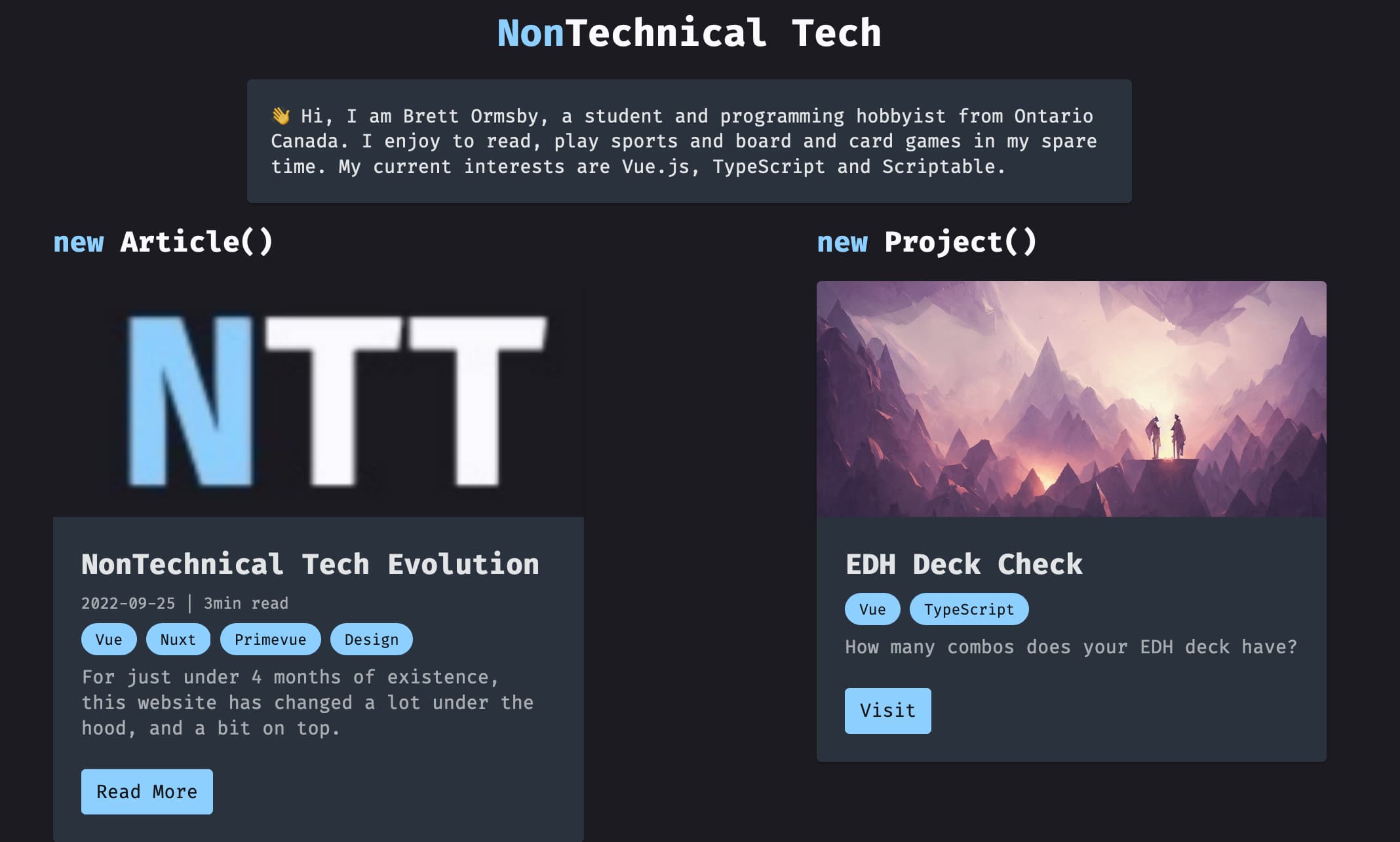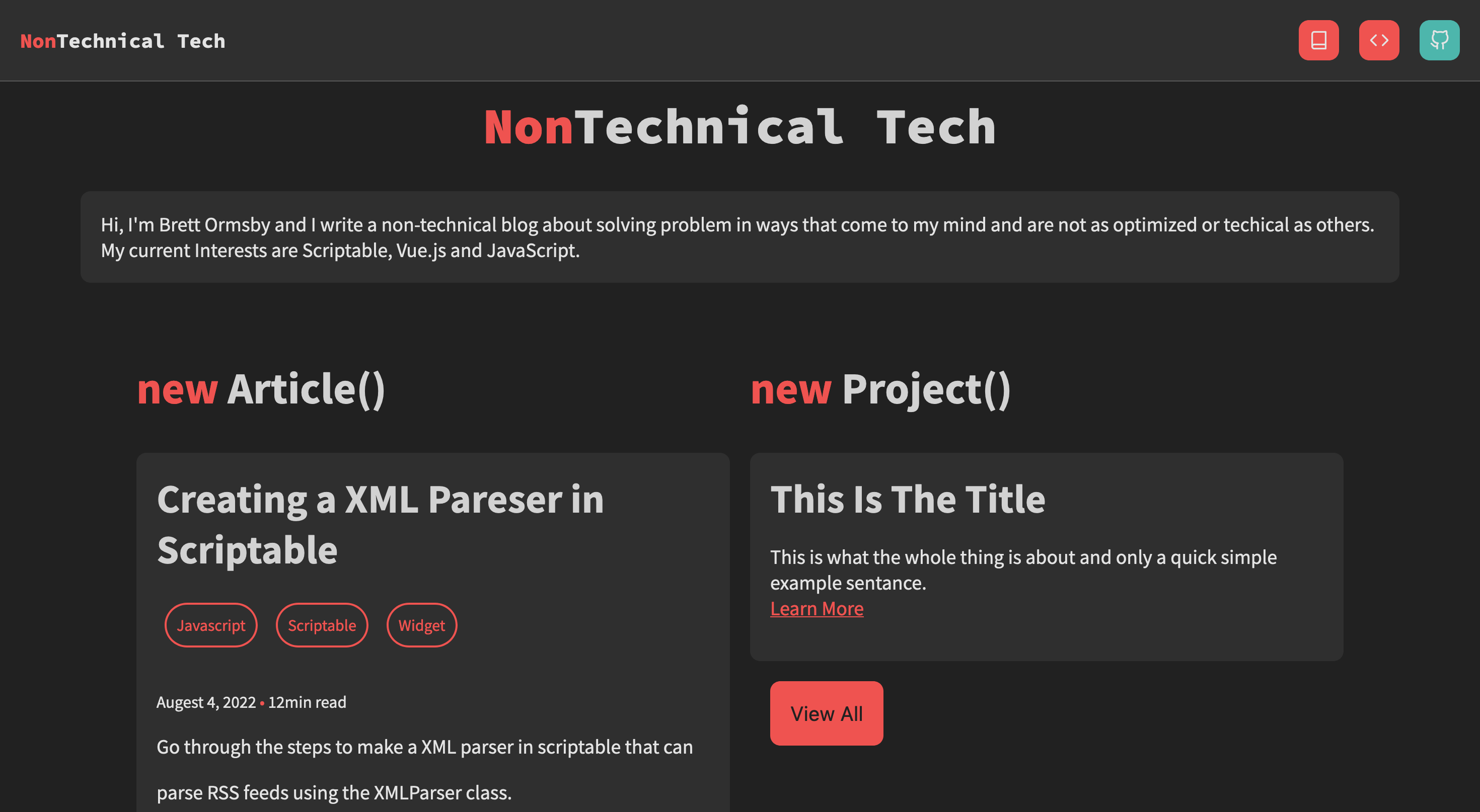NonTechnical Tech Evolution
• 3min read

NonTechnical tech has gone through many changes in technology and style.
This website was the first real website I ever made and I used my new and first computer. It was also the first website I ever made with vue .
Phase 1, Vue Options Api
Vue 3, options API, Webpack, self-made CSS, publicly served markdown and JSON data
My first time using Vue, node and all the bells and whistles that come with development from a computer came with many struggles. The opinion API was pretty easy to use. The properties were self-explanatory and sped up development far faster than regular vanilla JS. Reaching the end, after struggling through many router issues and determining the best way to fetch the markdown, I had an okay-looking website that worked for what I had in mind.

Phase 2, Hosting Markdown and Data on Supabase
Vue 3, Options API, Webpack, Self-made CSS, Supabase-served Markdown and JSON Data
Then, I wanted to be able to update my articles and projects and was learning a bit about CMS. I looked for free CMSs that allow you to serve raw markdown and JSON data, but I could not find any. At this time, I was also looking into Subabase and discovered that it has a storage API. So, I decided to use Supabase, meant for authentication and storing user data, to host my markdown files and JSON data. I also added my project page, latest project and search page to the website. It was beginning to look like something that I had envisioned. I spent some more time fixing styles and bugs, then phase 2 was complete.
Phase 3, Composition API
Vue 3, Composition API, Vite, Self-made CSS, Supabase-served Markdown and JSON Data
I began to learn the composition API and kind of enjoyed it. To understand it better, I decided to rewrite all the components of my website to use the composition API instead of the options. Using Refs was probably the hardest thing to get used to. The code was pretty easy to rewrite and looked far more readable than before. I also changed the Supabase hosting slightly to make it easier, switched to using Vite to bundle the code and fixed many CSS bugs.
Phase 4, Nuxt JS
Nuxt, Composition API, Typescript, Vite, Primevue, Nuxt Content
And now to the phase I am currently designing as I write this article. Phase 4 is all about improving the feel of the website. Markdown is loaded for the article before finishing the navigation. This removed the loading that was a turn-off to look at while the markdown was being fetched in phase 3. The styling of the website now uses Primevue to give it a much more professional look. Markdown and JSON data are hosted with Nuxt Content to make a faster load time and make it easier for me to update information. SEO should greatly improve because of the APIs Nuxt provides. I have these goals for phase 4 and hope they are fulfilled.

Phase 5, Astro
Astro, Typescript, Pico.css
Almost eight months later and I have changed the website again (will this ever end?). This phase was about simplicity. I wanted to learn some Astro, so I thought I would try to rewrite this website using it. Astro made things so easy with the routing and article fetching. The outcome was so less bloated that I thought I would keep this new technology. I also changed the name to reflect a portfolio more. Additionally, I used pico.css because I suck at styling and it provides all I need with minimum fluff. An extra benefit of using Astro was that I could serve the website on GitHub pages because Astro outputs static files, leaving me another free site to host on Vercel.
